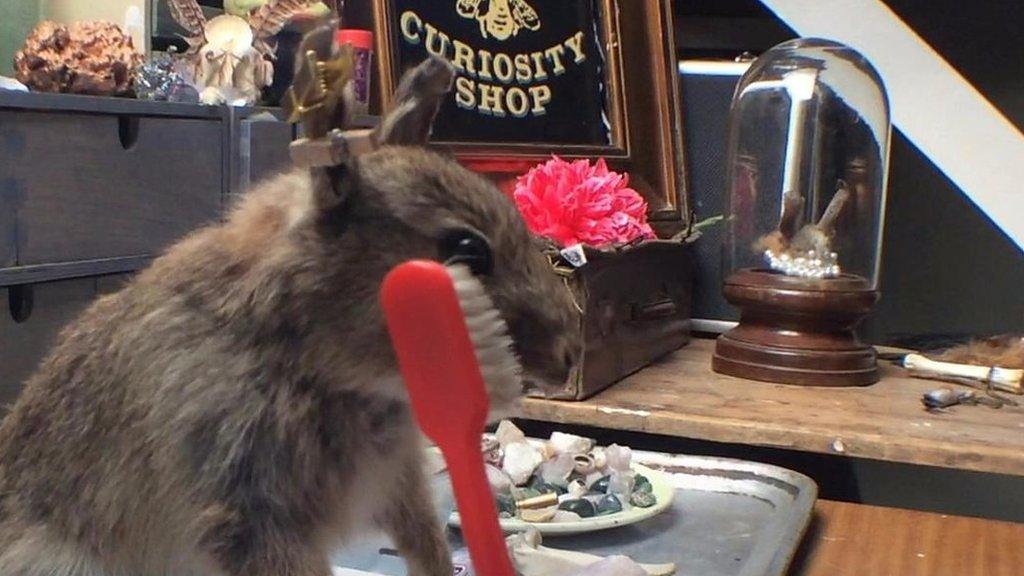The women who are killing it in taxidermy
- Published
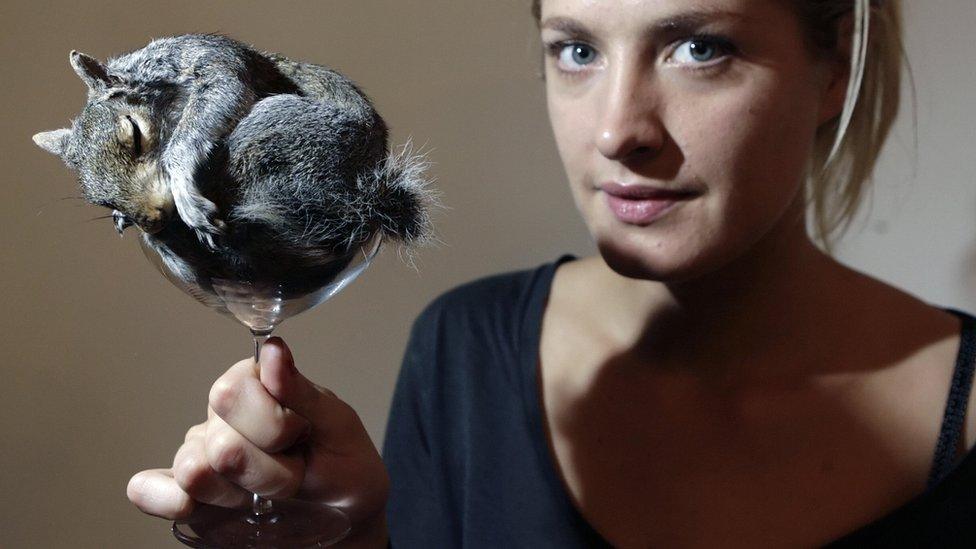
Taxidermist and artist Polly Morgan is probably the best known British woman working in the industry
If you were asked to conjure up an image of a taxidermist, you might visualise a moustachioed man in Victorian hunting attire. Now, more than a century after the practice reached a peak of popularity, a new wave of female taxidermists aims to change perceptions about their profession.
'I always have crows in my freezer'
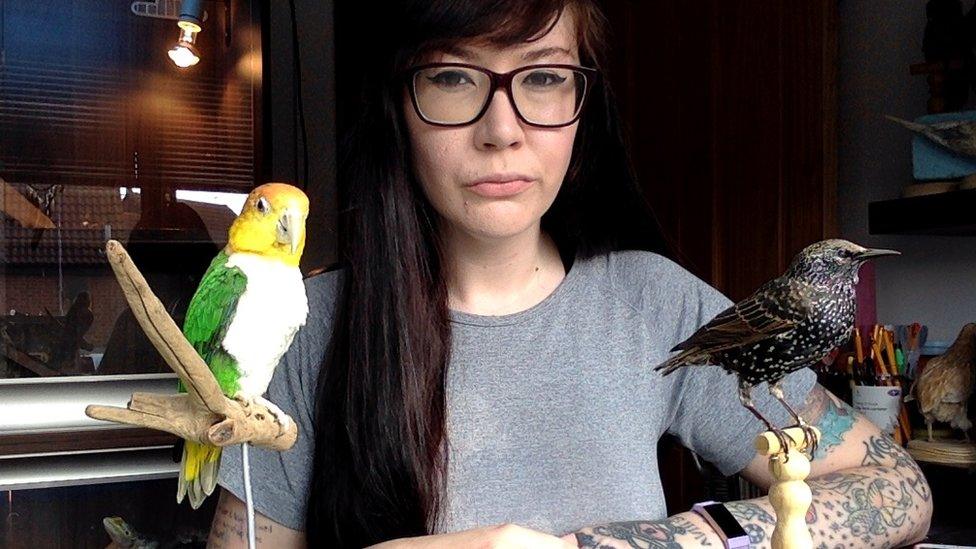
Hannah Debnam with a white-thighed caique and a starling - the starling was given to her by the owner of the cat that killed it
It started with a school trip to a museum. The dinosaur bones were boring and so were the fossils, but when it came to the dead mammals, six-year-old Hannah Debnam was hooked.
"It freaked a lot of the other kids out but I was just staring at it all: the lion, the tiger, the articulated horse skeleton - I was just utterly amazed."
Now aged 28, she is one of a growing number of young women who have made taxidermy their trade.
"I spot dead animals when I'm driving and take them home. Instead of buying me flowers, my husband brings me dead things.
"I can't stand the thought of these animals going to waste, rotting on the side of the road," she says.
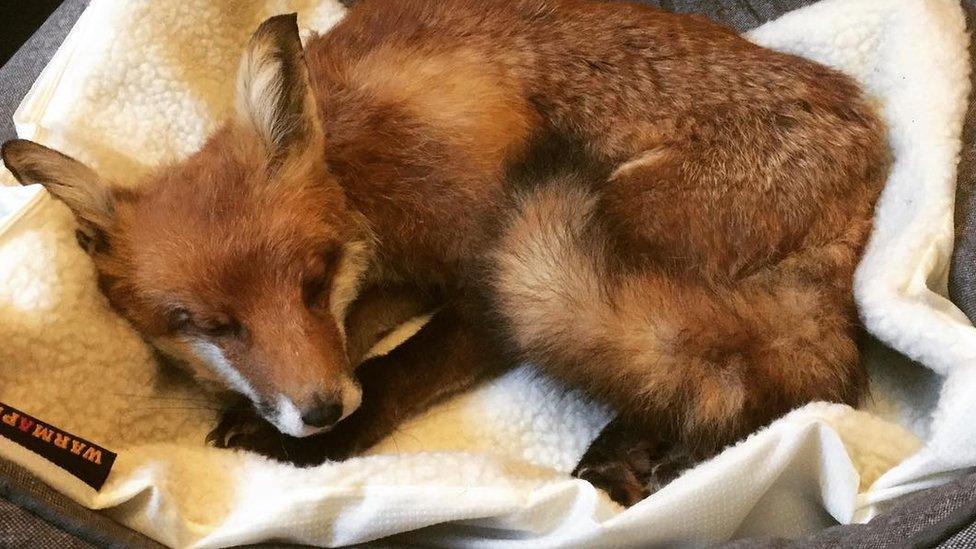
This young fox was found at the roadside by Mrs Debnam's husband
Mrs Debnam, who lives in Trimley St Mary, Suffolk, often posts on Facebook asking people to alert her to roadkill.
She "always has crows" in her freezer, which are currently next to a polecat and a puppy that died from heart failure.
She says she often gets emotional and has to walk away from her work and compose herself.
It is also laborious work - a peacock takes up to two weeks to preserve - and she finds it tough because of her health.

A breeder sent Mrs Debnam this crested tinamou after it died from natural causes
"I've got osteoarthritis, Ehlers-Danlos syndrome and I'm in remission from cancer," Mrs Debnam says.
"When your body is working against you, it's hard to believe in yourself, but it has made me more determined."
Periods of bed rest are used to watch online tutorials to help her refine her techniques.
"I've been through some dark times but taxidermy has got me through. It's so special, bringing these creatures back to life and making them beautiful again."
'It's not all old men in sheds'
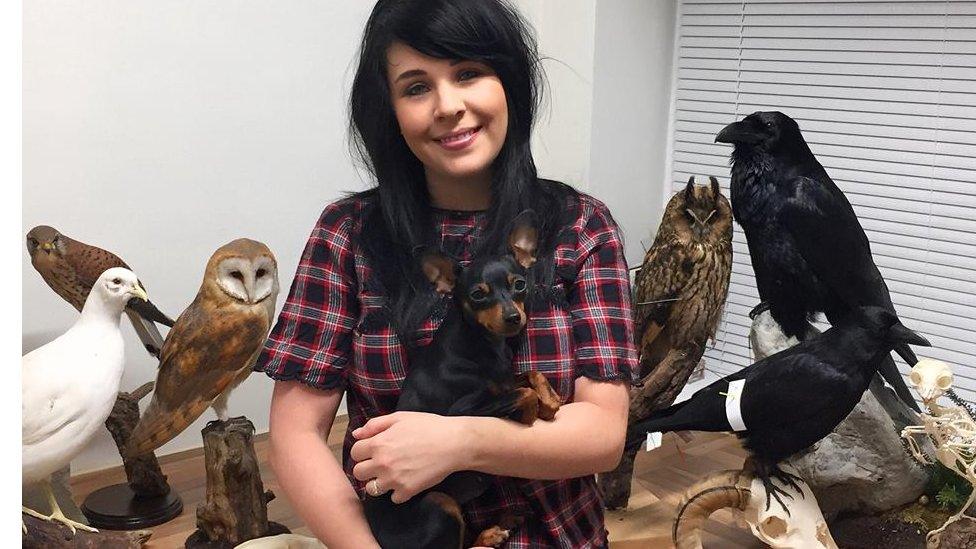
Emilie Woodford works with a conservation group that takes her birds into schools to educate children
Polly Morgan - whose art made from dead animals has been bought by Charles Saatchi, Kate Moss and Courtney Love - is probably the best known British woman working in the industry.
However, Emilie Woodford, who is on the committee of the Guild of UK Taxidermists, sees her as more of an artist than a traditional taxidermist.
"I believe animals should be kept in their natural form, rather than being manipulated into pieces of art," Ms Woodford says.
"I prefer to keep things as Mother Nature intended."
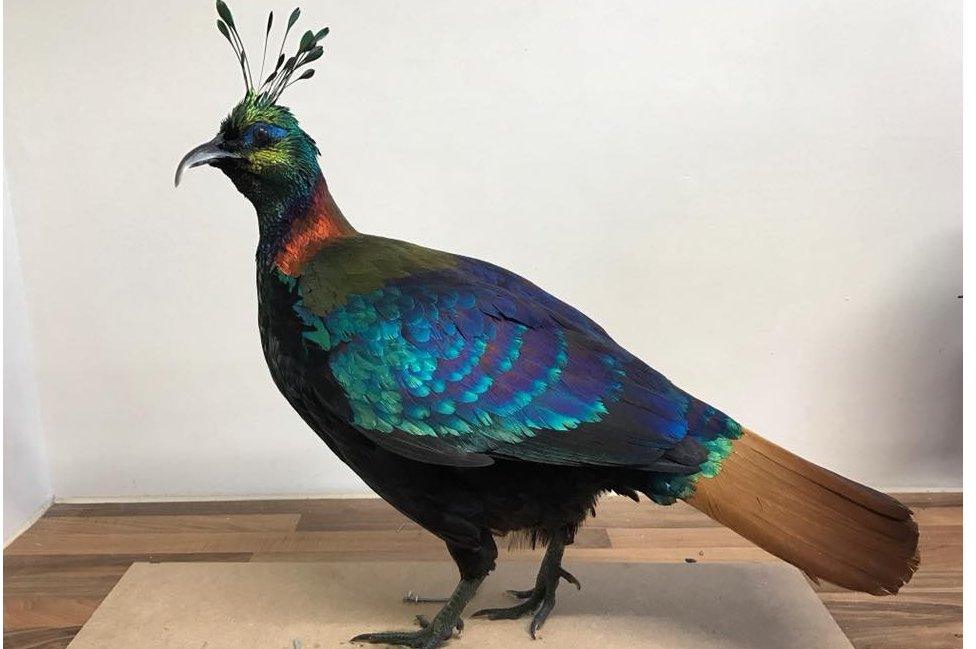
Ms Woodford preserved this Himalayan monal pheasant, which was sent to her by a bird-keeper
The 28-year old, who lives in York, worked as a veterinary nurse before changing her career.
"Wildlife was brought in and it was such a waste when it died; everything was lost forever," she says.
She hopes the industry can be better understood in the future.
"It's not all old men working in their sheds. Films like 101 Dalmatians and Paddington don't help because they portray taxidermists as these evil people, but I really hope we can change the public's opinion."
'It's about doing justice to an animal'
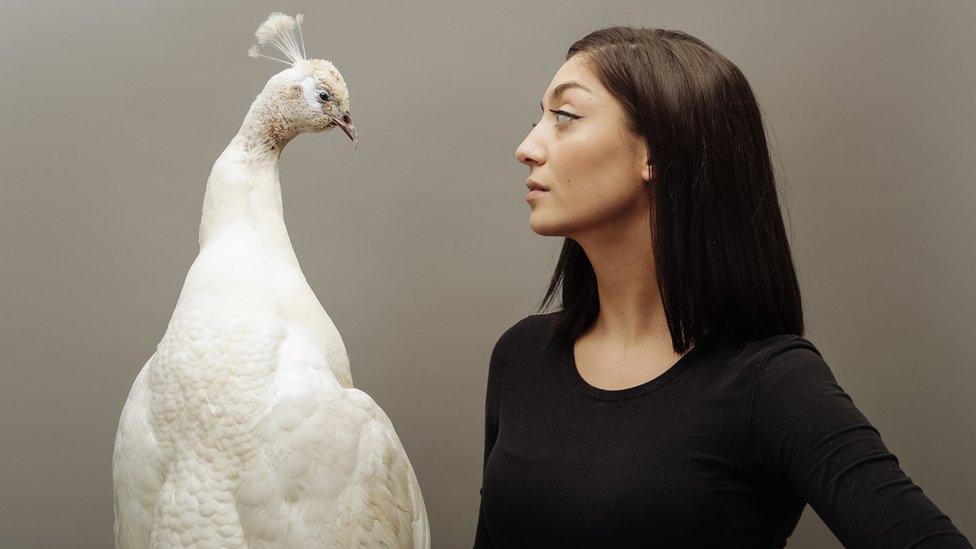
Elle Kaye preserved this white peacock, which died from an infection
Elle Kaye, who specialises in bird taxidermy, often gets messages on Instagram from girls who want to follow in her footsteps. When she teaches classes, the pupils are nearly always female.
However, the 27-year-old, who lives in Hertfordshire, says she receives more online abuse than many of her contemporaries.
She expected a backlash because of her choice of profession, but says she also gets judged for her appearance.
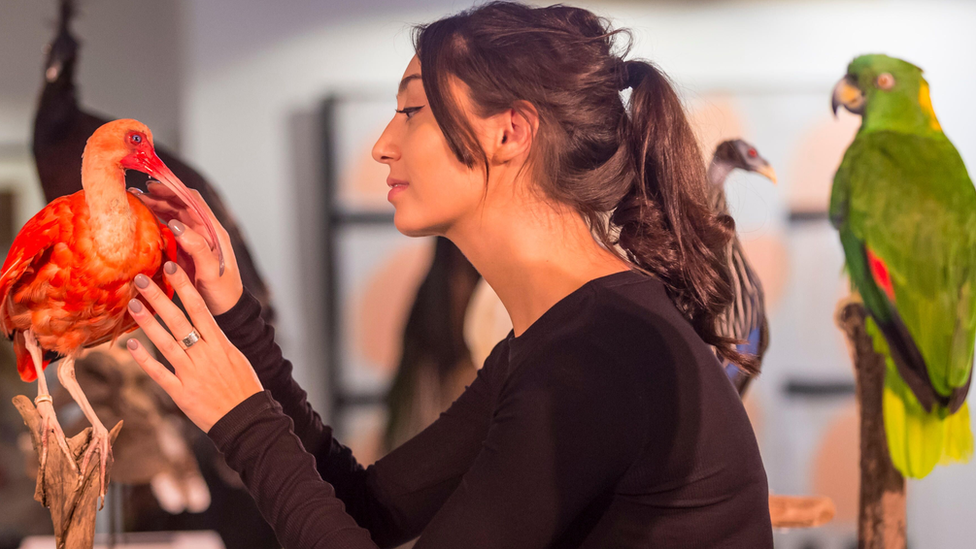
Ms Kaye preserved this scarlet ibis which was sent to her by a zookeeper
"It shouldn't be about me, or about being a woman - the work should speak for itself - but that's the thing people pick up on.
"I've spent hours trying to master my craft and then I get all these comments saying I look anaemic, I'm too skinny, too tanned, too young.
"Then asking where my parents are from, what country I was born in, why I look a certain way, why I get my nails done when I work with dead animals all day. It's so frustrating."
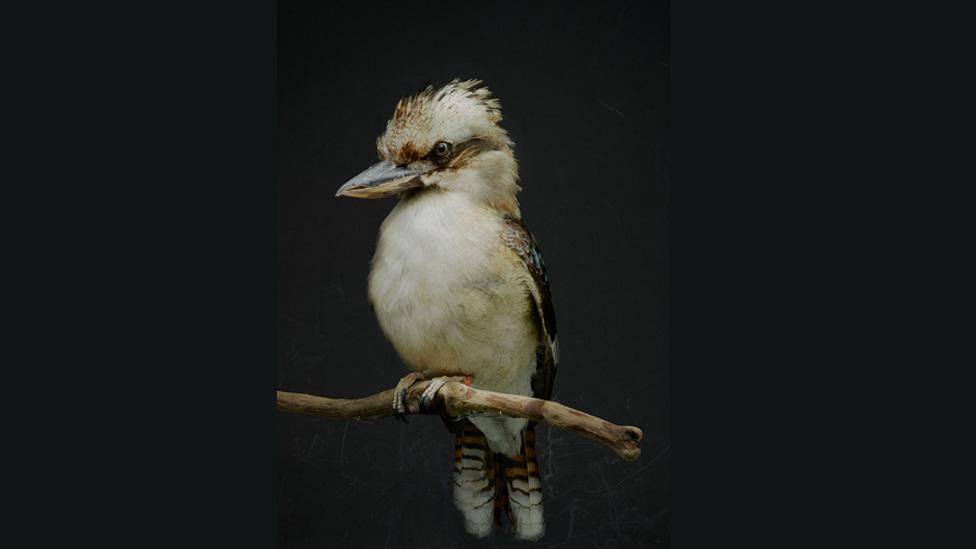
This kookaburra lived in a zoo before it died of natural causes and was sent to Ms Kaye to preserve
Taxidermy was a much more common practice in the Victorian era, when animals were hunted for the purpose of being stuffed. People often presume this is still the case, Ms Kaye says.
"That's a big misconception. The word 'taxidermy' harbours some sort of ghost. I do two exhibitions a year and I just try and educate people and change their opinions.
"The work is really hard. I wouldn't go through all of this - the time, the effort and exposing myself to the chemicals - if I hated animals. It's a real labour of love."
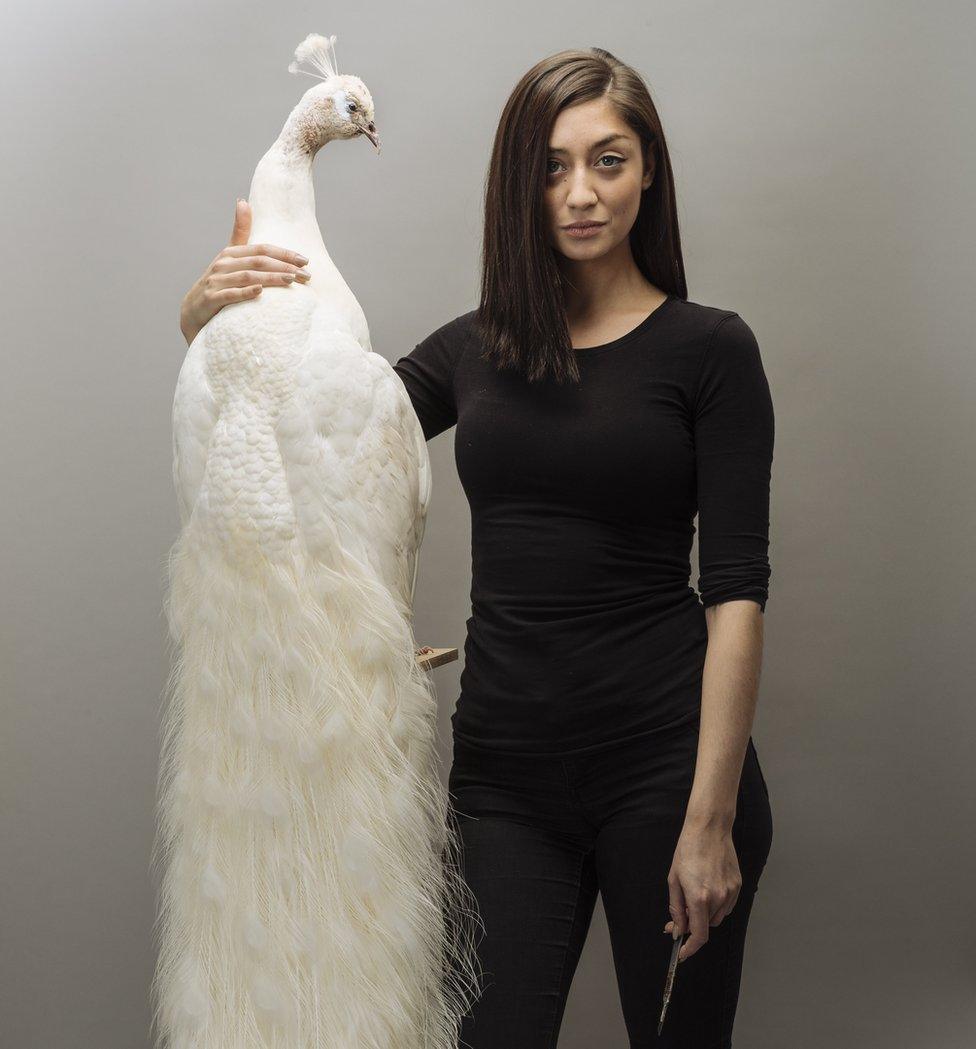
Ms Kaye studied fine art at university before she became a taxidermist at the age of 22
Pet owners, specialist breeders and zookeepers send her their dead birds. She currently has five chest freezers full of owls, flamingos, parrots and peacocks.
Ms Kaye says she has considered leaving taxidermy behind, but her devotion to conservation keeps her going.
"It is incredibly demoralising when you work hard, and then are just cut down. It affects your confidence," she says.
"My job is about doing justice to an animal and preserving it for future generations. I really want to inspire children to become biologists and vets.
"The negativity gets me down but I just try and be the best taxidermist I can be."
Related topics
- Published2 April 2019
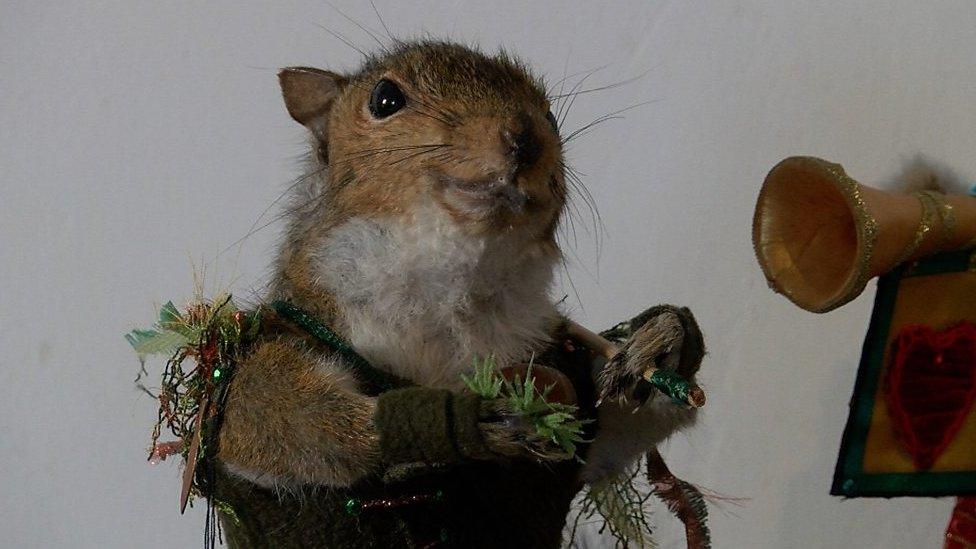
- Published18 February 2019

- Published29 April 2017
